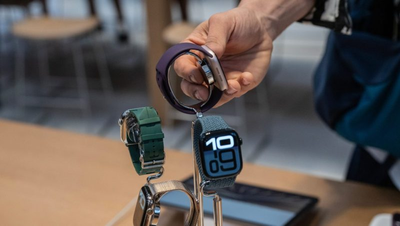
(KTLA) – The Apple Watch has long been seen as the Bad Bad Leroy Brown of smartwatches (as in the "baddest" in town). The new Series 10 — bigger, brighter, slimmer — seems to maintain that status.
But it’s also increasingly clear that the future of the Apple Watch isn’t just as an alternative to cell phones, but also as a medical device. And the Series 10 takes an already-impressive skillset in that regard and adds even more oomph under the hood.
The Apple Watch measures your heart rate, ECG, sleep, steps and other vitals. New to the Series 10 is gauging the likelihood of sleep apnea, a potentially serious disorder characterized by interrupted breathing while asleep.
All this data is conveniently aggregated in Apple’s Health app, which is quickly becoming the one-stop shop for personal health info.
Reportedly in the works for future versions of the Apple Watch: blood pressure monitoring and blood glucose readings.
But it’s important to emphasize that Apple can’t, by law, market the watch as a medical device. That would require regulatory approval from the Food and Drug Administration, not to mention a prescription from your doctor to get one.
The Apple Watch, therefore, is positioned as a handy way to oversee various aspects of daily activities, but not as a way to treat medical conditions.
Even so, that’s precisely what some people are already doing.
People with Type 1 diabetes can connect their Dexcom blood-glucose sensor — an FDA-approved medical device — directly to their Apple Watch. This allows them to see their blood sugar in real-time, right on their wrist, and to act accordingly if they’re running high or low.
This instantly makes the Apple Watch one of the most valuable tools in managing a chronic illness. Blood pressure monitoring, when available in this country, will likely be no less game-changing for people with hypertension or stress issues.
The new sleep apnea feature monitors overnight respiration and, at the end of 30 days, provides an assessment of your likelihood of needing treatment.
Again, the Apple Watch isn’t a card-carrying medical device, so the best it can do in this case is crunch the numbers and then advise you, if your numbers are high, to see a doctor for proper testing.
Yes, it’s nice to see various notifications on your wrist and to have speedy access to favorite apps, but health maintenance provides a standout reason to add a smartwatch to your trove of electronic toys. And it’s a fair bet subsequent versions of the Apple Watch will build on this momentum.
It’s also not hard to envision a time when a premium version of the watch does have regulatory approval as a medical device and, with a doctor’s prescription, will play an indispensable role in managing all sorts of disorders.
For the time being, the Apple Watch Series 10, starting at a price of around $400, demonstrates that this gadget is no longer just a novelty or status symbol. It could be a genuine boon to healthcare.
Badder than old King Kong, you could say.